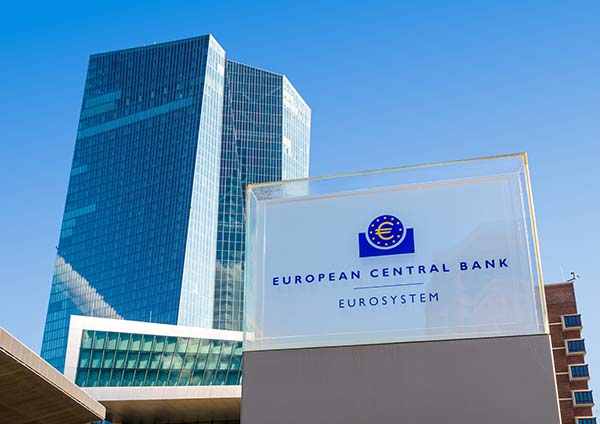What Really Creates Monopolies in the United States
Joel Salatin|June 20, 2023

The concentration and centralization of American industries has the Federal Trade Commission working overtime filing antitrust litigation. It raises the question… what are the true origins of oligarchies and monopolies?
I don’t know of a single monopoly that came about organically. These concentrations of power in the marketplace always seem to receive special concessions from governments. This point was made abundantly clear to me in a fascinating book I just finished, historian Thomas DiLorenzo’s The Real Lincoln.
I must confess my ignorance regarding the development of railroads in the United States. The iconic Great Northern Railway, I now know, was completely privately financed and developed. No eminent domain, no taxpayer money, no use of special legislative power. But Lincoln and others of his ilk devised grandiose empire-building schemes to use public money for internal improvements. The railroads they fostered – which were publicly financed and government-protected – were inefficient, uneconomical and monopolistic.
Today, taxpayer money is used to fund everything from green energy initiatives and electric vehicles to slaughterhouses. With each “investment” comes a host of manipulative requirements… the kind that build monopolies.
Interestingly, in 1906, seven companies controlled half of America’s beef and pork processing. That was before any government involvement in the industry, which was decried as too concentrated. Today, only four companies control roughly 85% of the U.S. beef and pork market.
Folks routinely tell me this modern overconcentration is a result of free markets. The opposite is true. As licensing requirements and inspections became the law of the land, cronyism and political concessions created a scale-prejudicial meat processing environment.
Congress made significant changes to the regulation of the meat industry in 1948, 1967 and 2011. In each case, within six months the nation lost half – did you read that? – half of its abattoirs.
Do you reckon a connection exists?
The ugly truth is that government intervention stimulates concentration because it leads to favoritism for politically connected outfits. Now, if those businesses happened to be the best, the most efficient or the most innovative, it might not be so bad. But too often, the types of outfits that gravitate toward political cronyism are the basest of the competing businesses. The orneriest railroads. The orneriest meat packers. The orneriest EV manufacturers.
In an Adam Smith-style open market, antitrust measures would be unnecessary due to competition. After all, no product or service is immune to improvement. Everything can be improved. But in a market like the one we have today, regulations and inspections freeze protocols and designs in time and space. Improvements that don’t comply with regulations can’t come to market.
If someone figures out that a square peg does a better job but the bureaucracy requires a round peg, the new idea can’t be adopted. Nothing grows forever. Nothing lives forever. Things eventually become too big or too old or too ingrown. That’s the nature of business, of inventions, of service.
The only thing immune to these constraints is bureaucracy. As long as the people don’t rebel, the government can grow unabated. And, in the process, it becomes less functional and begins eating the society, like a progressive cancer.
People who think the answer to the concentration of industry is government antitrust litigation don’t realize that the road to monopolies is paved by government agencies. The famous revolving door between an industry and its regulators is part and parcel of this reality. And people love it so.
Have you ever heard about a home-schooler being appointed or elected to a school board? How about a small nonchemical farmer being appointed to a state’s agriculture oversight board? Or a rabid advocate of apprentice-based learning being appointed to a state’s higher education commission?
Government regulators have an incestuous relationship with the sectors they’re supposed to police. Ultimately, such a relationship creates monsters, not accountability.
In the late 1960s, backyard tinkerers developed carburetors that would’ve made it possible for automobiles to travel 100 miles on a single gallon of gas. And each one was purchased by either an oil company or a car manufacturer. By that time, the 1,500 auto manufacturers that had existed in the early part of the century had dwindled down to half a dozen – partly due to market selection at first but, toward the end, due to increasingly strict regulations on manufacturing, labor, zoning and marketing.
This occurs in nearly every sector of the economy. Try starting a vineyard and selling wine directly to people. Or try making biodiesel and selling it. Fuel is subject to more regulations than blood.
A society that wants new ideas should make it easy for innovators to experiment. With the internet and social media, using real-time feedback to sort good ideas from bad ones is easier than it’s ever been. Leveraging public accountability keeps unsound ideas from proliferating and puts wind into the sails of sound ideas.
For example, imagine if COVID jabs had received no boost, endorsement or funding from the government and we had instead let the market sort out the best ones. Imagine the opportunity this would have created for competing ideas to come to the marketplace. Government intervention, however, politicized the situation and yielded only a couple of alternatives created by well-connected outfits. What a different conversation we could have had.
The point is that absent licensing requirements, government manipulation and taxpayer subsidies, each idea has to fight for its right to exist. It has to fight for that right in the most competitive space imaginable – the mind of the consumer.
The private sector can handle energy, education, housing, banking, food and almost any other societal need or service. Requesting government intervention in any market inherently moves that market toward centralization and concentration – and away from innovation.

Joel Salatin
Joel Salatin calls himself a Christian libertarian environmentalist capitalist lunatic farmer. Others who like him call him the most famous farmer in the world, the high priest of the pasture, and the most eclectic thinker from Virginia since Thomas Jefferson. Those who don’t like him call him a bioterrorist, Typhoid Mary, a charlatan, and a starvation advocate. With a room full of debate trophies from high school and college days, 12 published books, and a thriving multigenerational family farm, he draws on a lifetime of food, farming and fantasy to entertain and inspire audiences around the world.





